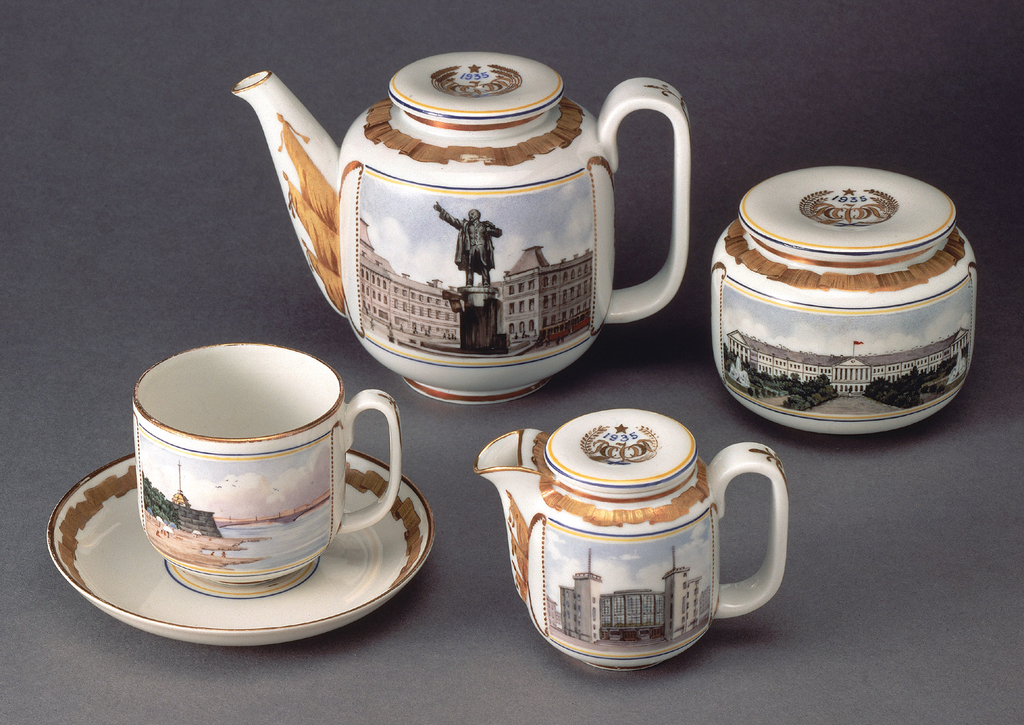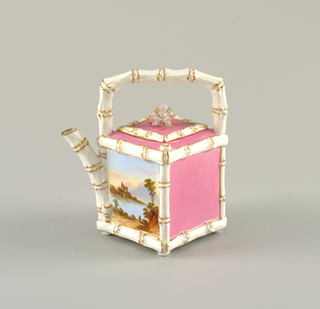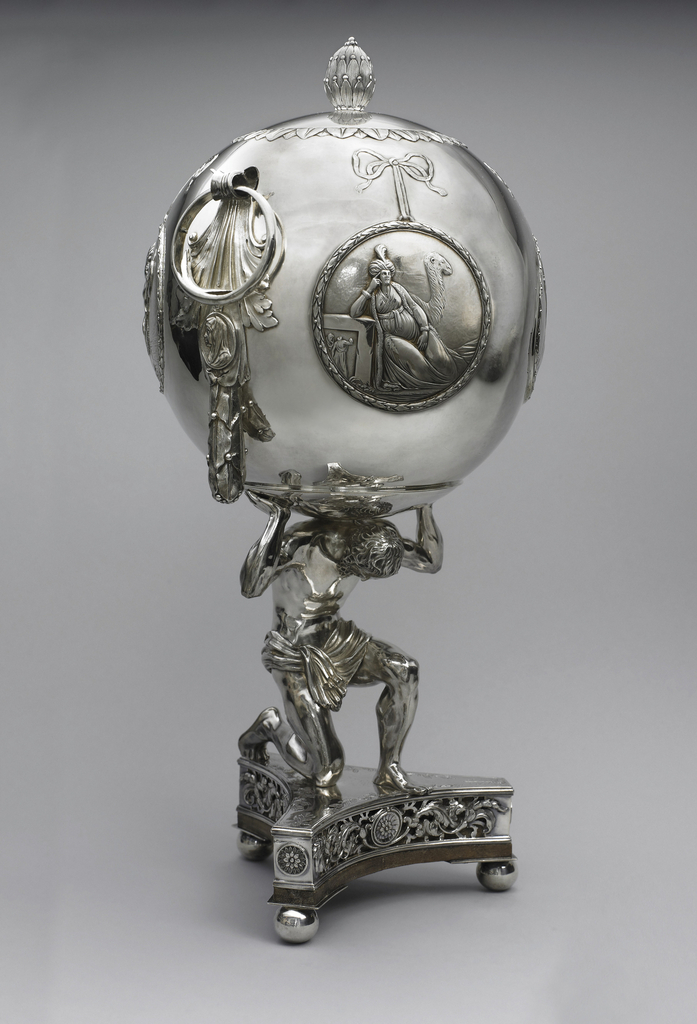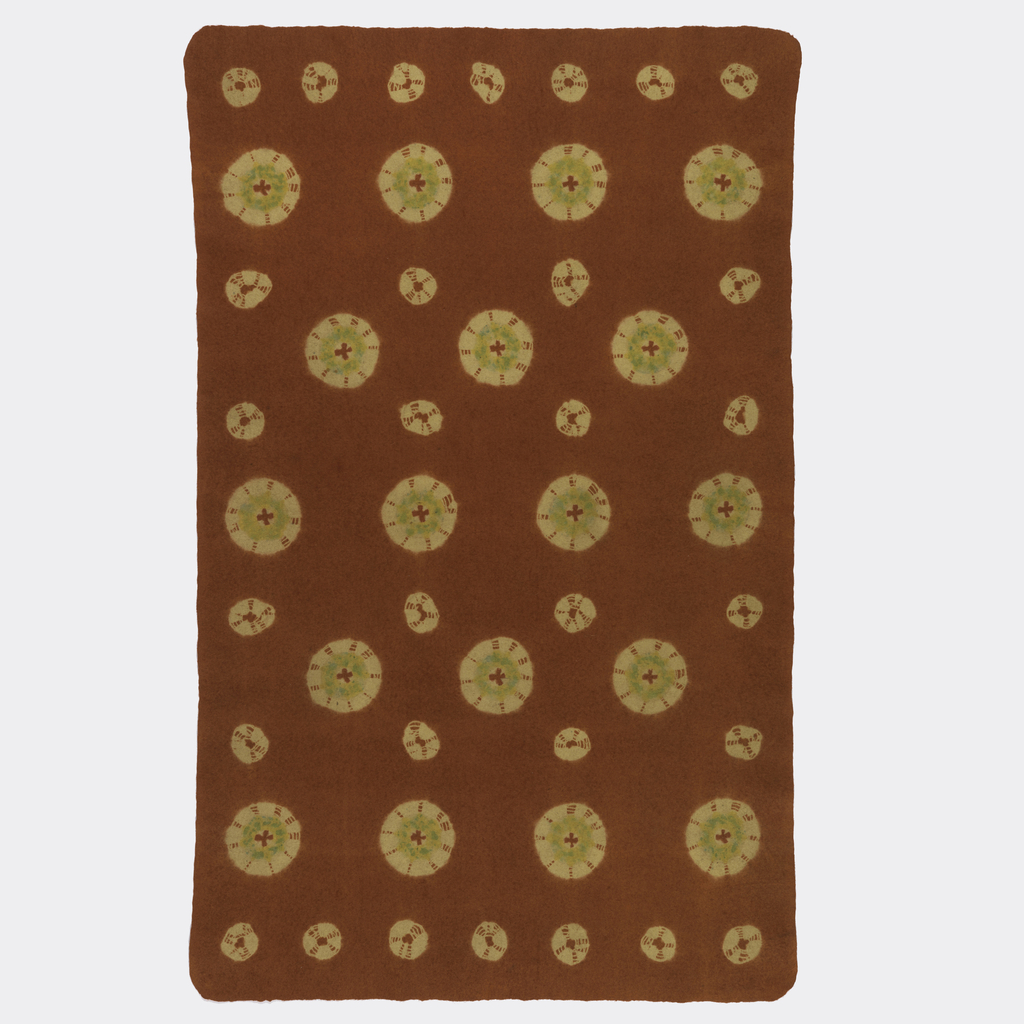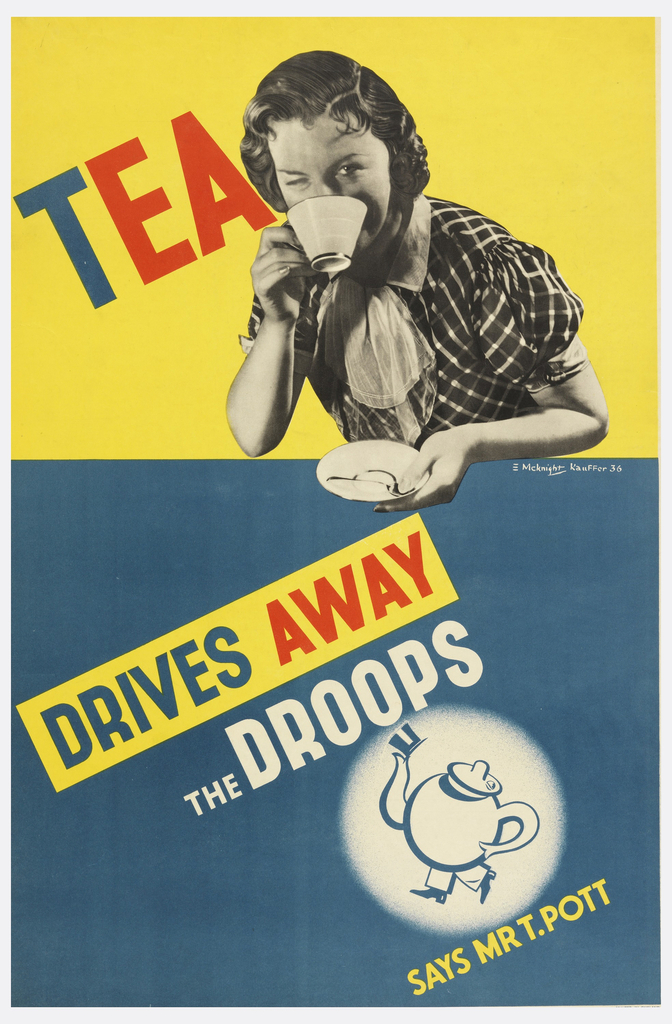In celebration of National Design Month, October’s Object of The Week posts honor past National Design Award winners. A version of this post was published on November 13, 2012. Eva Zeisel, a major figure in twentieth-century industrial design, won the National Design Award for Lifetime Achievement in 2005. Although best known for her contributions to mid-century...
Author: Zenia Malmer To the modern eye, this 19th century teapot, made by Edwin James Drew Bodley, who was in charge of an English china and earthenware manufacturer in Staffordshire, might border on kitsch. The spout, handle and edges are decorated with moulded bamboo stalks, with gilding to accentuate their nodes. Bright pink panels feature...
This distinctive tea urn takes the form of Atlas supporting the world. Its triangular base has openwork decoration and rests on three ball feet. The spherical urn is held aloft by the kneeling figure of Atlas, straining as he supports the globe on his shoulders. The surface is decorated with reliefs featuring four wreathed circular...
This mosen, a type of rug used in Japanese tea ceremonies, dates from the late 19th century and was made in China for the Japanese market. China was Japan’s main source for wool felt mosen and although they are not rare, usually they show extreme wear. Most of them use the tie-dye technique known as...
Until the 1920’s, the tea industry’s main outlet was Great Britain, where consumption had been rising significantly since the beginning of the century[1]. This situation changed after the First World War and the economic crisis following the 1929 Wall Street Crash. Traditional surpluses in tea production from British India and Ceylon surged, while increasing pressure...
